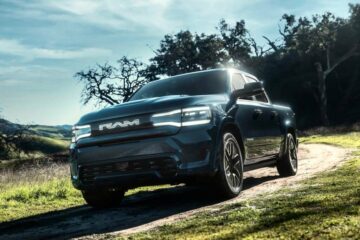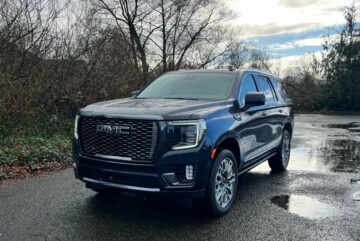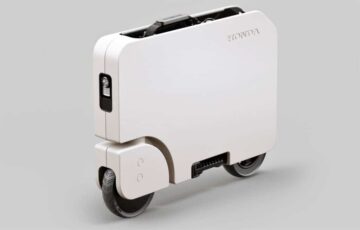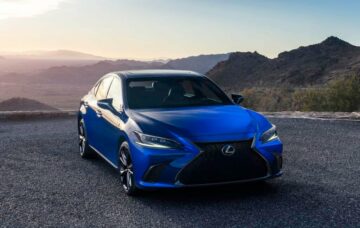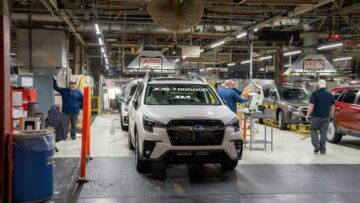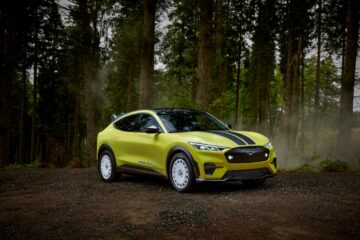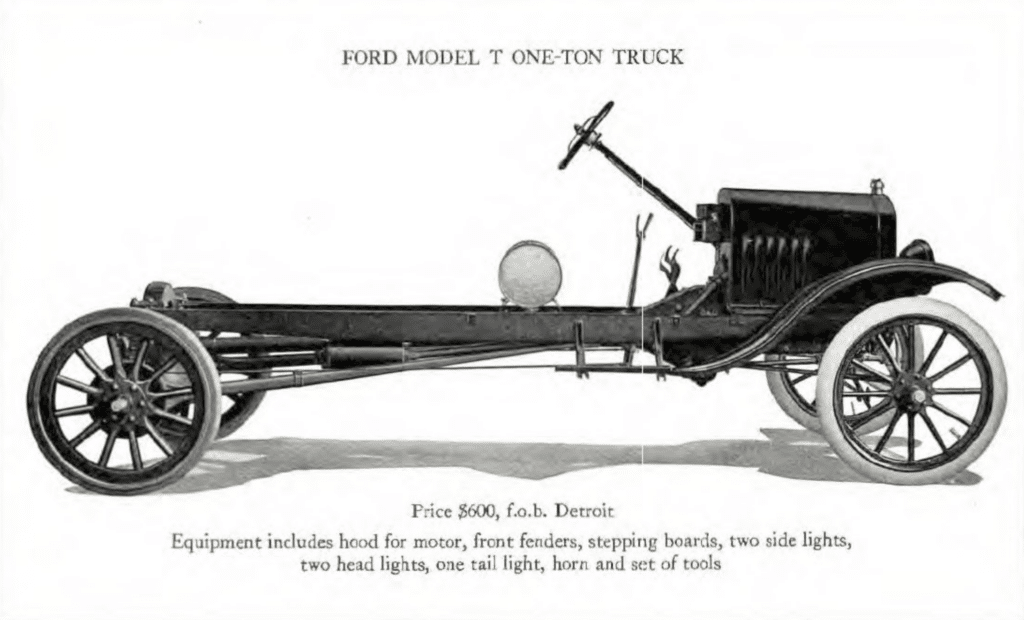
It may seem that Ford has always built pickups since it builds the bestselling pickup in the world.
But it didn’t always.
In fact, it took 12 years before the company introduced its first pickup. But this week in 1948, Ford unknowingly gave birth to a dynasty with the introduction of the F-1 pickup truck, the first F-Series truck.
Truck ancestors
For nearly a decade after the introduction of the Ford Model T, customers requested a vehicle that had more utility and the ability to haul heavier cargo. Ford responded with the Model TT in 1917, basically a Model T cab and engine with a heavier-gauge steel frame capable of carrying 1 ton of payload at a price of $600 and made to accommodate third-party body configurations. But it was a rough rider as only front shocks were offered and they were optional. Nevertheless, by the time production ended in 1928, Ford had sold 1.3 million Model TTs.

It was replaced by the 1.5-ton Model AA, offered only as a chassis cab in two lengths. Following it was the Model BB in 1933. The all-new Model 50 in 1935, powered by a Ford Flathead V-8 and looking much like Ford’s car line. By the time production ends in 1941, Ford has sold more than four million pickups.
As Ford switches to wartime production, one of its primary assignments was to help supply the war effort with Jeeps, a military vehicle designed by Willys-Overland based on a design originated by American Bantam. Ford’s experience in building the Jeep would help them once development work began on their new pickup truck.
But the company struggled during World War II, particularly after the death of Henry Ford’s son, Edsel, in 1943. Now in his 70s, Henry Ford attempted to run the privately held company. But its increasingly perilous financial condition led to Henry Ford II to assume control by 1945.
When he did, his one goal was to beat Chevrolet in sales, including in the truck market, where Chevrolet had enjoyed a huge lead since the 1930s.
A new Ford at the helm

With Henry Ford II in charge, the company went about redesigning its vehicles even as it built marginally facelifted versions of its prewar models to satisfy a booming postwar sellers’ market as consumers snapped the first new cars available since 1942. As it turns out, the all-new Ford F-1 was the automaker’s first new postwar product. It came out first merely because pickups took less time to develop than cars.
“After the war, a lot of rural Americans moved to urban and suburban centers looking for work, and many took their Ford pickups with them,” said Henry Ford marketed his early trucks heavily in rural areas, according to Ford Historian Bob Kreipke. “Ford saw this as an opportunity, and began work on the next generation of trucks for 1948, what came to be known as F-Series Bonus Built trucks.”
Introduced Jan. 19, 1948 starting at $900, the F-1 was available in every size from the rom the half-ton F-1 to the three-ton F-8, it was a huge improvement from previous Ford work trucks. Notably, it was the first Ford pickup truck engineered with a specific truck frame and chassis; previous Ford light trucks were based on passenger car platforms and used front and rear transverse springs, which Henry Ford favored. Instead, the new F-1 had parallel leaf springs, double-acting tubular shock absorbers, an open driveshaft and Hotchkiss drive.
Styling saw a longer, wider and taller truck, one that featured a one-piece windshield. Chrome trim could be added to the hood and grille for $10. Ford designers paid particular attention to the interior, which it marketed as the “Million Dollar Cab.” Seven inches wider than before, it included a full set of gauges and the luxury of fresh air heat, sun visors, armrests, an ashtray, door-mounted vent windows and a column-mounted 3-speed manual shifter, allowing for more passenger space
New choices under the hood

Engines were new as well, as the F-1’s power came from a standard Rouge Six, a 3.7-liter L-head inline-6 introduced in 1941 and rated at 95 horsepower. A 3.9-liter Flathead V-8 was available, and rated at 100 hp. Larger F-series trucks could be fitted with a new 5.5-liter flathead V-8 that would later be used in the redesigned 1949 Lincoln. Through 1954, Ford was the only company to offer V-8s in its pickups.
And it could haul, thanks to a 6.5-foot-long pickup box with an all-steel floor with pressed-in skid strips and a hardwood subfloor. A reinforced tailgate, stake pockets, and 45 cubic feet of load space. If you wanted an 8-foot bed and 160.3 cubic feet of cargo space, you had to opt for the F-2 or F-3 pickup.
The Ford F-1 was also offered in Canada as the Mercury M-1, as many towns in Canada didn’t have both a Ford and Lincoln Mercury dealer.
The F-1 was restyled for 1951 and soldiered on another year before the arrival of its replacement, the 1953 F-100.
Fourteen generations later, the F-1’s descendants reign as America’s most popular vehicle for more than four decades. And it all started on this week, 75 years ago.
- SEO Powered Content & PR Distribution. Get Amplified Today.
- Platoblockchain. Web3 Metaverse Intelligence. Knowledge Amplified. Access Here.
- Source: https://www.thedetroitbureau.com/2023/01/the-rearview-mirror-the-birth-of-a-ford-icon/
- 1
- 1.3
- 100
- 1949
- 1951
- a
- ability
- About
- above
- accommodate
- According
- added
- After
- AIR
- All
- Allowing
- always
- American
- Americans
- and
- Another
- areas
- arrival
- attempted
- attention
- available
- based
- Basically
- because
- before
- began
- Beginning
- bestselling
- body
- Bonus
- Box
- Building
- builds
- built
- Canada
- capable
- car
- Cargo
- carrying
- cars
- Centers
- charge
- chassis
- Chevrolet
- choices
- Chrome
- company
- condition
- Consumers
- control
- could
- Customers
- dealer
- Death
- decade
- decades
- Derived
- Design
- designed
- designers
- develop
- Development
- DID
- Dollar
- drive
- during
- Early
- effort
- ends
- Engine
- Even
- Every
- experience
- featured
- Feet
- financial
- First
- Floor
- following
- Ford
- FRAME
- fresh
- from
- front
- full
- generation
- generations
- goal
- heavily
- Held
- help
- henry
- henry ford
- hood
- HP
- HTTPS
- huge
- ICON
- iconic
- improvement
- in
- inches
- included
- Including
- increasingly
- instead
- interior
- introduced
- Introduction
- IT
- Jan
- jeep
- known
- largely
- larger
- lead
- Led
- Legacy
- light
- Lincoln
- Line
- load
- longer
- looked
- looking
- Lot
- Luxury
- made
- manual
- many
- Market
- max-width
- Mercury
- merely
- Military
- million
- mirror
- model
- models
- more
- most
- Most Popular
- nearly
- Nevertheless
- New
- next
- notably
- offer
- offered
- oldest
- ONE
- open
- Opportunity
- originated
- paid
- Parallel
- particular
- particularly
- Pickup
- Platforms
- plato
- Plato Data Intelligence
- PlatoData
- pockets
- Popular
- power
- powered
- previous
- price
- primary
- Product
- Production
- redesigning
- replaced
- requested
- Run
- Rural
- Rural Areas
- Said
- sales
- set
- seven
- since
- SIX
- Size
- sold
- son
- Space
- specific
- stake
- standard
- started
- Starting
- steel
- Sun
- supply
- The
- the world
- their
- third-party
- this week
- Through
- time
- to
- Ton
- towns
- truck
- Trucks
- under
- urban
- utility
- vehicle
- Vehicles
- wanted
- war
- week
- What
- which
- wider
- windows
- Work
- world
- would
- year
- years
- zephyrnet


